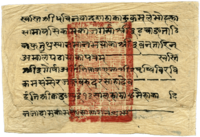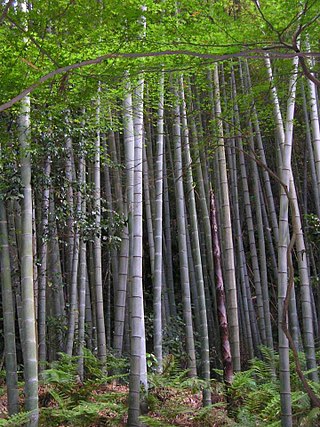
Bamboos are a diverse group of mostly evergreen perennial flowering plants making up the subfamily Bambusoideae of the grass family Poaceae. Giant bamboos are the largest members of the grass family, in the case of Dendrocalamus sinicus individual culms reaching a length of 46 meters, up to 36 centimeters in thickness and a weight of up to 450 kilograms. The internodes of bamboos can also be of great length. Kinabaluchloa wrayi has internodes up to 2.5 meters in length. and Arthrostylidium schomburgkii with lower internodes up to 5 meters in length, exceeded in length only by papyrus. By contrast, the culms of the tiny bamboo Raddiella vanessiae of the savannas of French Guiana are only 10–20 millimeters in length by about two millimeters in width. The origin of the word "bamboo" is uncertain, but it probably comes from the Dutch or Portuguese language, which originally borrowed it from Malay or Kannada.

A handicraft, sometimes more precisely expressed as artisanal handicraft or handmade, is any of a wide variety of types of work where useful and decorative objects are made completely by one's hand or by using only simple, non-automated related tools like scissors, carving implements, or hooks. It is a traditional main sector of craft making and applies to a wide range of creative and design activities that are related to making things with one's hands and skill, including work with textiles, moldable and rigid materials, paper, plant fibers, clay, etc. One of the oldest handicraft is Dhokra; this is a sort of metal casting that has been used in India for over 4,000 years and is still used. In Iranian Baluchistan, women still make red ware hand-made pottery with dotted ornaments, much similar to the 5,000-year-old pottery tradition of Kalpurgan, an archaeological site near the village. Usually, the term is applied to traditional techniques of creating items that are both practical and aesthetic. Handicraft industries are those that produce things with hands to meet the needs of the people in their locality without using machines.

Origami is the Japanese art of paper folding. In modern usage, the word "origami" is often used as an inclusive term for all folding practices, regardless of their culture of origin. The goal is to transform a flat square sheet of paper into a finished sculpture through folding and sculpting techniques. Modern origami practitioners generally discourage the use of cuts, glue, or markings on the paper. Origami folders often use the Japanese word kirigami to refer to designs which use cuts.

Logging is the process of cutting, processing, and moving trees to a location for transport. It may include skidding, on-site processing, and loading of trees or logs onto trucks or skeleton cars. In forestry, the term logging is sometimes used narrowly to describe the logistics of moving wood from the stump to somewhere outside the forest, usually a sawmill or a lumber yard. In common usage, however, the term may cover a range of forestry or silviculture activities.

Papermaking is the manufacture of paper and cardboard, which are used widely for printing, writing, and packaging, among many other purposes. Today almost all paper is made using industrial machinery, while handmade paper survives as a specialized craft and a medium for artistic expression.

Daphne is a genus of between 70 and 95 species of deciduous and evergreen shrubs in the family Thymelaeaceae, native to Asia, Europe and north Africa. They are noted for their scented flowers and often brightly coloured berries. Two species are used to make paper. Many species are grown in gardens as ornamental plants; the smaller species are often used in rock gardens. All parts of daphnes are poisonous, especially the berries.

Card making is the craft of hand-making greeting cards. Many people with interests in allied crafts such as scrapbooking and stamping have begun to use their skills to start making handmade cards. This has contributed to cardmaking becoming a popular hobby.
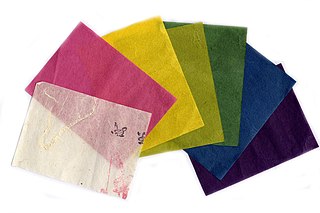
Washi (和紙) is traditional Japanese paper processed by hand using fibers from the inner bark of the gampi tree, the mitsumata shrub, or the paper mulberry (kōzo) bush.

Banana paper is a type of paper created from banana plant bark or banana peel fibers. Banana paper has a lower density, higher stiffness, higher disposability, higher renewability, and higher tensile strength compared to traditional paper. These qualities are due to the cellular composition of banana fiber, which consists of cellulose, hemicellulose, and lignin.
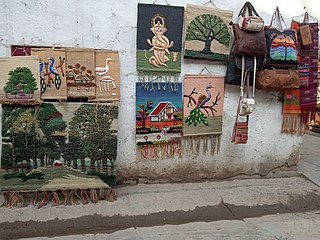
Nepalese handicraft history can be traced back to the Stone Age when human beings were inadequate of tools of every things. The history of artistic handicrafts only began during the 5th century AD, when different religions began to form their bases among the people of Nepal. Hence we see a lot of religious influence on Nepalese handicrafts.
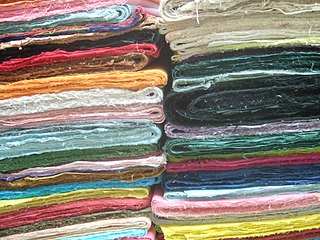
Korean paper or hanji is the name of traditional handmade paper from Korea. Hanji is made from the inner bark of Broussonetia papyrifera, known colloquially as paper mulberry, a tree native to Korea that grows well on its rocky mountainsides, known in Korean as dak. The formation aid crucial to making hanji is the mucilage that oozes from the roots of Hibiscus manihot. This substance helps suspend the individual fibers in water.

The Sustainable Forestry Initiative (SFI) is a sustainability organization operating in the U.S. and Canada that works across four pillars: standards, conservation, community, and education. SFI was founded in 1994 by the American Forest & Paper Association (AF&PA). SFI is the world's largest single forest certification standard by area. SFI is headquartered in Ottawa and Washington, D.C.

Daphne laureola, commonly called spurge-laurel, is a shrub in the flowering plant family Thymelaeaceae. Despite the name, this woodland plant is neither a spurge nor a laurel. Its native range covers much of Europe and extends to Algeria, Morocco and the Azores.

Daphne bholua, the Nepalese paper plant, is a species of flowering shrub in the genus Daphne of the family Thymelaeaceae. It grows at altitudes of 1,700–3,500 m (5,577–11,483 ft) in the Himalayas and neighbouring mountain ranges, from Nepal to southern China. At lower altitudes it is found as an evergreen in thickets and forest margins; at higher altitudes, it is deciduous and is usually found in pastures and grassy glades. It usually reaches a height of about 2.5 m, though some specimens reach 4 m (13 ft) or more.
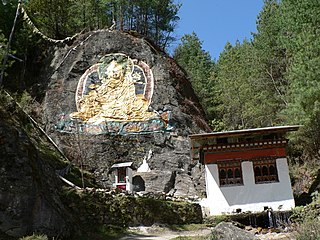
Bhutanese art ༼འབྲུག་པའི་སྒྱུ་རྩལ༽ is similar to Tibetan art. Both are based upon Vajrayana Buddhism and its pantheon of teachers and divine beings.

Mexican handcrafts and folk art is a complex collection of items made with various materials and intended for utilitarian, decorative or other purposes. Some of the items produced by hand in this country include ceramics, wall hangings, vases, furniture, textiles and much more. In Mexico, both crafts created for utilitarian purposes and folk art are collectively known as “artesanía” as both have a similar history and both are a valued part of Mexico's national identity. Mexico's artesanía tradition is a blend of indigenous and European techniques and designs. This blending, called “mestizo” was particularly emphasized by Mexico's political, intellectual and artistic elite in the early 20th century after the Mexican Revolution toppled Porfirio Díaz’s French-style and modernization-focused presidency. Today, Mexican artesanía is exported and is one of the reasons why tourists are attracted to the country. However, competition from manufactured products and imitations from countries like China have caused problems for Mexico’s artisans.
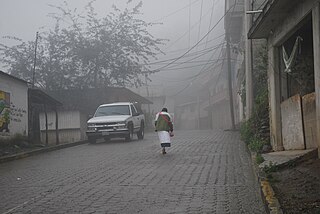
San Pablito is a small town located on the side of the Guajalote Mountain in the Sierra Norte de Puebla mountain region in central east Mexico. It belongs to the Pahuatlán municipality of the state of Puebla. Culturally it is dominated by the Otomi although it is part of the La Huasteca region.

Edgeworthia gardneri is a plant in the Thymelaeaceae family. It is a small evergreen shrub growing up to 3–4 metres (10–13 ft) tall. It can be distinguished by its brownish red stem. The flowers are hermaphrodite.

Daphne papyracea is a shrub, of the family Thymelaeaceae. It is evergreen, and is found across Asia, from Pakistan through central Nepal to China. Generally it is found at elevations from 700 to 3,100 metres. Daphne laciniata from Yunnan has been treated as a separate species or as part of D. papyracea.

Eastern Rukum is a mountain district of Lumbini Province of Nepal situated along the Dhaulagiri mountain range. It is also the only mountain district of the province with its tallest mountain Putha Hiunchuli situated in the west end of Dhaulagiri II mountain chain, at an elevation of 7,246 meters. The drainage source of ancient Airavati river, one of the five sacred rivers of Buddhism, lies in the lesser Himalayas of the district. With a Dhaulagiri mountain range, lakes, rich Magar culture and its political history, Eastern Rukum has been among the top travel destinations of Nepal as designated by the Government of Nepal.
